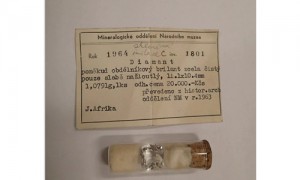China remains reliant on oil & gas imports and domestic coal production for energy consumption. But Beijing has spearheaded projects to boost renewables as well.
Nonetheless, fossil fuels continue to be the most reliable and cheapest sources of energy.
Companies in the energy sector must invest large capital in equipment, technology infrastructure and land resources to exploit resources, build storage and transport converted energy to power plants.
Energy companies should also cut costs to maintain sufficient profit margins for continuous operations and to meet growing consumer demand, especially in China.
There's a necessity for energy producers to search for new resources to help turn on the lights for buildings and homes nationwide.
Chinese researchers may have found the solution after discovering large reserves of combustible ice in the Tibet-Qinghai Platform and South China Sea.
Replacing fossil fuels
According to Xinhua, China is estimated to hold 80 billion tons of combustible ice in reserves. It's a natural gas hydrate that could serve as a replacement for oil & natural gas.
Combustible ice is frozen methane and water that can be lit on fire. You can find the frozen methane in high altitude tundra plains and in the deep sea.
Scientists have not yet figured out how to convert combustible ice into energy, but much progress has been made since starting research programs in the 1960s. China began R&D in the field in 1998.
The process calls for phases in which combustible ice gets melted on fire to release methane and water that would combust as an energy source.
One cubic meter of combustible ice equates to 164 cubic meters of natural gas.
Making trial runs
China's Ministry of Land & Resources (MOLR) has approved plans to set up 2-4 combustible ice bases for industrial development. On May 18, the MOLR announced combustible ice samples were collected in the South China Sea.
A Chinese team has spent nearly two decades conducting research and exploration of combustible ice and has uncovered major breakthroughs that could lead to a global energy revolution.
"So far, trial mining of combustible ice in the Shenhu Sea, about 320-km. southeast of Zhuhai, Guangdong Province made smooth progress with an average of 8,350 cubic meters with high purity extracted each day," Li Jinfa, deputy director of China Geological Survey under MOLR, told Xinhua.
Beijing will accelerate the exploration of reserves with the launching of trial mining in different types of combustible ice found on the Tibet-Qinghai Plateau and South China Sea, while strengthening marine science and technology innovations.
Challenges lay ahead
Although combustible ice when successfully converted to energy will be achieved with zero carbon emissions, environmentalists have expressed concerns over potential eco-hazards.
In regards to reserves on the Tibet-Qinghai Plateau, there's a risk methane could be release into the earth's atmosphere causing a significant increase of carbon emissions. Actually, melting methane with fire is the best and most green approach.
At sea when drilling for combustible ice, methane gas leakage could seep into the ocean and might cause serious consequences.
Two domestic companies - China International Marine Containers Group and China National Petroleum Corporation - are performing tests on drilling and production operations in the South China Sea.
Ye Jianliang is head of the hydrate production field and he told China Daily that his team supports strict measures.
"We are monitoring the air, seawater, seabed and the exploration equipment," Ye said, "No pollution to the environment or geologoical hazards had happened so far."
Top priorities
Beijing supports stronger environmental protections and believes tapping into combustible ice can achieve a green-friendly success story.
The natural gas hydrate can become more efficient and an abundant form of clean energy. The Communist Party of China (CPC) is highlighting its strategic importance for global energy development.
Last May, the CPC's Central Committee and State Council (Cabinet) issued a letter to scientists and researchers developing combustible ice for commercial purposes.
The letter encouraged more independent innovations in theory, engineering and equipment for natural gas hydrate exploration and exploitation, which can bring benefits for the world and member states participating in China's Belt & Road Initiative.
"Many countries along the Maritime Silk Road have a demand for combustible ice mining," the Shanghai Daily quotes Qiu Haijun, director of China's trial mining headquarters, as saying.
Qiu added, "With the advanced technologies, we could help resolve the energy resources problem while boosting economic development and exchanges between countries."
Shared benefits
Experts say China has sufficient combustible ice in reserves to supply enough energy for the country in the next 90 years.
Nevertheless, combustible ice is not ready for commercial use. China forecasts the first phase of its development will be achieved by 2020, which includes the adaption of new mining technologies and evaluations of the seabed's holdings of the natural gas hydrate.
China Yantai CIMC Raffles Offshore Ltd. is conducting testing in the South China Sea and the project is dubbed, 'Blue Whale 1.'
If all goes according to plan, combustible ice can be burned into energy and made available for consumers by 2030. China is sparking the flame for clean energy that might eventually replace oil & gas a few decades later on.







